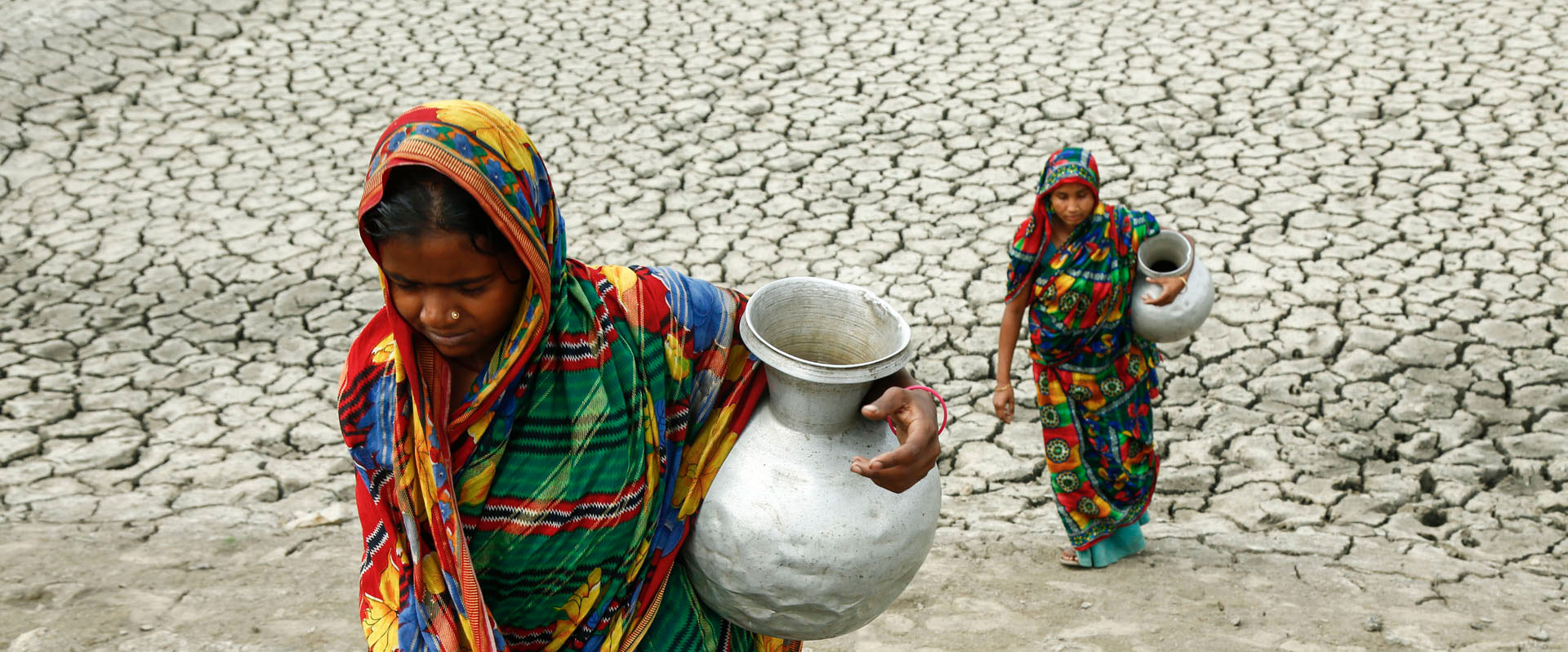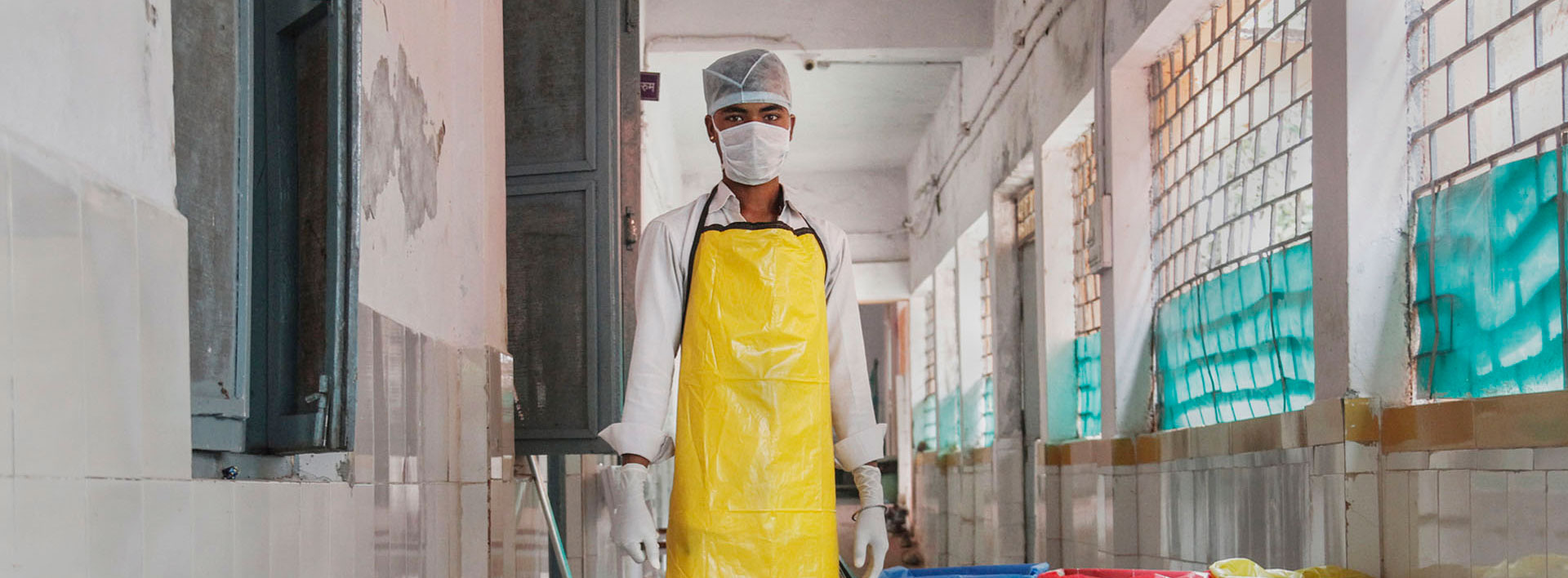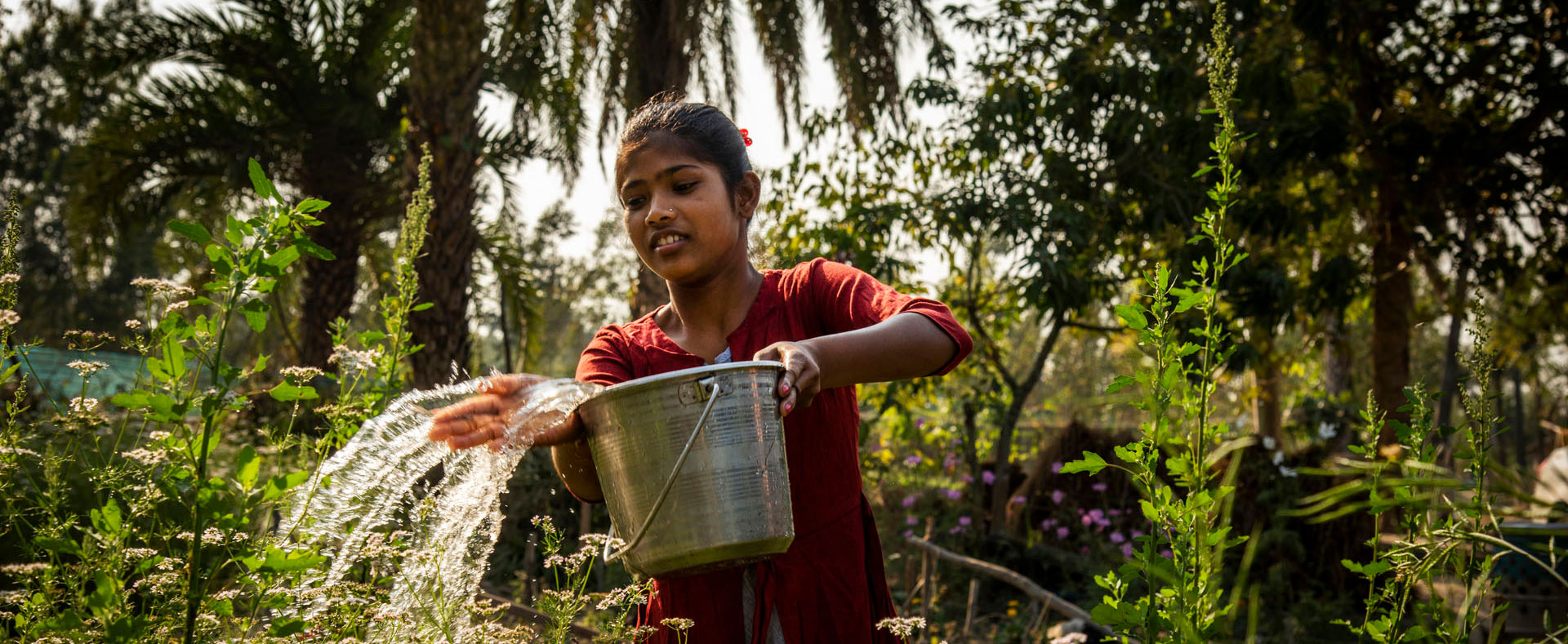
How water in 48 countries is key to the success of the world's most important climate summit
Almost half the world’s population need help getting permanent access to water. Dealing with this problem could be crucial to action on climate change.
Water will be a key issue at November’s United Nations Climate Change Conference (COP26), as developing nations move towards greater action on climate adaptation. “Emerging economies will be pushing for richer countries to make good on a pledge to deliver $100bn in aid by 2020.” says Professor Saleemul Huq, Director of the International Centre for Climate Change and Development in Dhaka, Bangladesh.
And they want half of that amount to go to climate adaptation measures, with a focus on water issues such as drought and flood prevention, he notes. “What energy is to mitigation, water is to adaptation.”
So far, the climate aid offered by rich nations has been barely four fifths of what was promised, and of that only around 20 per cent has been destined for climate adaptation. This is “totally inadequate,” says Prof Huq. “If it isn't resolved, the developing countries are just going to tell the developed countries: ‘It isn’t worth talking to you about anything, because your word doesn't count – you make a pledge and then you fail to meet that pledge.’”
What energy is to mitigation, water is to adaptation
Professor Saleemul Huq, Director of the International Centre for Climate Change and Development in Dhaka, Bangladesh
Patrick Verkooijen, Chief Executive of the Global Center on Adaptation, says putting climate adaptation on the same footing as carbon cuts will be a “litmus test” for the success of the talks. “There is no outcome from COP26 unless adaptation is put on a par with reducing emissions,” he says. “We need a bold plan to be put on the table.”
One example of such a plan is the Africa Adaptation Acceleration Program, which aims to mobilise $25bn for climate adaptation, including water resilience. Half of this has already been committed, and Verkooijen says he expects substantial commitments will be put forward at COP26 and the balance delivered at COP27 which will be held in an African country next year. Henk Ovink, Dutch Special Envoy for International Water Affairs, says water-related challenges get ignored by decision makers, even though “90 per cent of impacts are through water: heavy rainfall, hurricanes, tsunamis, soil subsidence, extreme droughts, water shortages and more.”
Of particular concern are water stresses in the 48 nations that make up the Climate Vulnerable Forum, a group that encompasses 1.2bn people but is responsible for just five per cent of global emissions. The Forum includes low-lying countries such as the Maldives and the Gambia, which are at risk of rising sea levels, and drought-prone nations such as Ethiopia and Sudan. These countries are among more than 100 developing economies that, in July, urged western leaders to honour a 2009 promise to deliver $100bn in climate aid by 2020. The support is seen as vital in allowing the countries to fund low-carbon development and tackle climate change impacts that are already locked in.
Signatories said there has been a “serial failure of the richest nations to live up to their pledge of leadership” and this was producing “more intense and frequent droughts, floods and other extreme weather events”.
The call to western leaders follows the publication last year of a report by the Global Center on Adaptation, which warned that the number of people who do not get enough water at least one month per year could rise from 3.6bn in 2019 to more than 5bn by 2050. More than 2bn people lack access to safe water supplies today.
Mozambique released only a fiftieth of the carbon emitted by the UK, but the capital almost ran out of water following three years of drought
According to international NGO WaterAid, developing nations received $73bn in international climate funding in 2018. Much of the aid so far has been in the form of loans, rather than grants, which means it is of limited use to nations already struggling with debt. Furthermore, WaterAid says only 8.7 per cent of climate funding that year went to projects helping communities withstand water stresses. Less than one per cent, meanwhile, was spent on helping the world’s poorest people access water and sanitation. Ovink warns this need to change: “The biggest shoulders should bear the biggest load.”
The disparity between nations causing climate change and those suffering its effects was vividly illustrated in 2017 in Mozambique. It released only a fiftieth of the carbon emitted by the UK, but the capital almost ran out of water following three years of drought. A year later, Mozambique experienced unprecedented, devastating floods. Water-related climate change impacts are exacerbated by the fact that many low-lying coastal areas are highly populated. In such areas, “with seawater rise, groundwater is not only depleting but also becoming more saline,” says Ovink. “We build in the wrong places.”
There are concerns that a failure to grapple with water problems could hamper developing nations’ ability to respond to global warming. This is already putting lives and livelihoods in danger and could jeopardise efforts to create a low-carbon future, as governments, businesses and communities react to compounding crises.
Emma Howard Boyd, Chair of the UK Environment Agency and Co-Chair of the Coalition for Climate Resilient Investment, says the global effort to reach net zero emissions by 2050 could potentially be compromised if nations are unable to take action due to lack of funds, and if “other options available to them are taking us in the wrong direction”.
At the same time, rich nations could stand to learn from the adaptation measures of more climate-stressed economies, she says. “If you are – literally, in some cases – one or two climate events away from being washed away, you’ve got to make sure that what you’re building, in terms of resilience, is absolutely at the forefront of this agenda,” Howard Boyd says.
Getting water onto the agenda at COP26 will be an important step in improving the climate resilience of millions of people around the world
Fortunately, protecting water and sanitation services from extreme weather is highly cost-effective. For every $1 spent upgrading flood-resistant infrastructure, $62 is saved in flood restoration costs. And awareness of the need to tackle water issues is growing. In March 2021, for example, HRH The Prince of Wales launched an initiative called the Resilient Water Accelerator, which aims to boost 50m people’s access to reliable and sustainable water sources by 2030, through improved collaboration between public and private sectors. In 2023, the UN Conference on the Water Action Decade, the first such conference on water since 1977, is also expected to kickstart efforts to respond to urgent water and sanitation challenges. Ovink hopes such initiatives will have a multiplier effect, and overcome water challenges over time. “I’m optimistic,” he says. “My optimism comes from the many examples [of projects] around the world that really want to be on the good side of history.”
Getting water onto the agenda at COP26 will be an important step towards improving the climate resilience of millions of people around the world. But what will really matter will be for governments and businesses in rich nations to live up to their longstanding financial commitments after the event as we forge a global response to this historic challenge.
Photo by WaterAid/Abir Abdullah.







